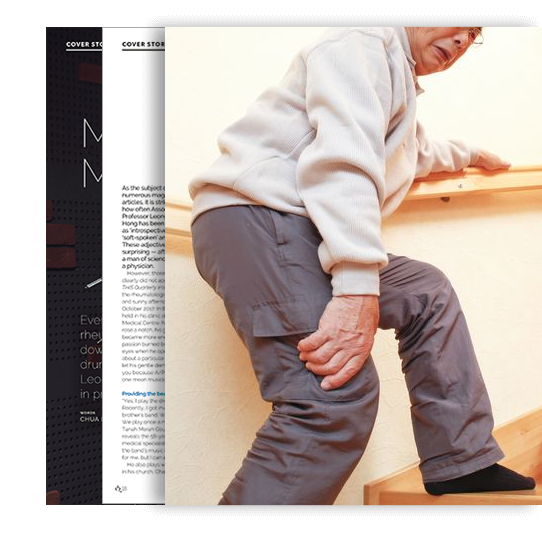Signs & Symptoms
There are many, and they include:
- Pain, stiffness and swelling in the joints that comes and goes, sometimes lasting more than an hour
- Aches and chronic inflammation of the joints on both sides of the body
- Difficulty carrying out daily tasks such as opening door knobs
- A general feeling of being unwell or uncomfortable
- Fever and fatigue
- Pain, stiffness and swelling in several joints which is usually worse in the morning
Many sufferers - especially younger ones - assume that they are too young to have arthritis, because this condition has long been incorrectly associated with ageing.
It either does not occur to them or they delay seeking treatment, thus allowing the condition to progress. But the consequences of leaving RA untreated can be devastating, and include:
- Damage and rupture of tendons leading to loss of function of a particular muscle and limb, which can result in immobility
- Damage to cartilage and bone
- Deformity of bones which, if left untreated for too long, can damage the joints and tendons
Getting Diagnosed
To find out if you or a loved one have RA, blood tests and X-rays are required.
Blood tests allow doctors to identify the rheumatoid factor, the antibody responsible for the immune system attacking and killing normal, healthy and functional cells. They also allow doctors to check the inflammation, not just in the joints, but in the organs.
X-rays taken over a period of time will indicate the rate of degradation of the cartilage.
There are many effective medicines that can slow down damage to the joints, cartilage and bone, and reduce the inflammation that causes the crippling pain. Treatment usually involves a combination of medication, lifestyle changes, regular exercise and even surgery in severe cases.
To improve the quality of life, a quick and early diagnosis is critical.
These flareups can make it too painful to perform simple everyday tasks like buying groceries or walking to the car.

